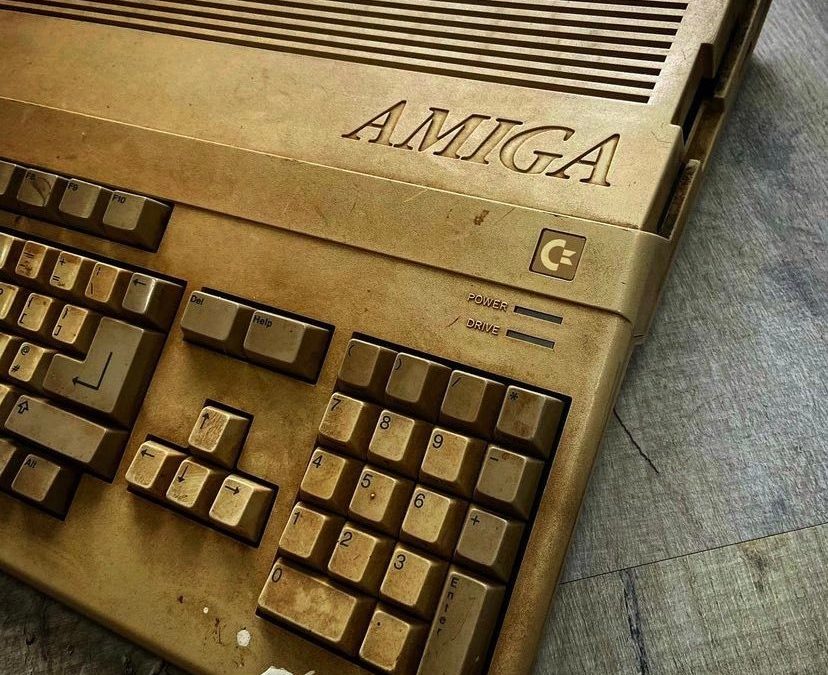Why do our old consoles go yellow?
Plastics are widely used in a variety of applications due to their low cost, lightweight, and durability. However, one common issue faced by plastic manufacturers and consumers is the yellowing of plastic products. The yellowing of plastic products is a result of exposure to sunlight, heat, and various environmental conditions, which cause the plastic to degrade over time. One of the primary causes of yellowing in plastics is the presence of bromine.
Bromine is a chemical element commonly used as a flame retardant in plastic products, particularly in electrical and electronic goods. The bromine molecules are incorporated into the plastic during the manufacturing process, where they act as a barrier to prevent the spread of fire. However, bromine-containing plastics have a tendency to go yellow over time due to a process known as photodegradation.
Photodegradation is the breaking down of a material into smaller molecules due to exposure to light. When plastic products containing bromine are exposed to sunlight, the ultraviolet (UV) light in the sun’s rays breaks down the bromine molecules and causes the plastic to yellow. The yellowing of the plastic is a result of the bromine molecules breaking down into smaller molecules that are absorbed by the plastic and cause it to change color.
Heat is another factor that contributes to the yellowing of bromine-containing plastics. The heat generated by electronic devices or vehicles can cause the plastic to become brittle and yellow over time. The combination of heat and UV light accelerates the photodegradation process and increases the yellowing of the plastic.
The yellowing of bromine-containing plastics not only affects the appearance of the product but also its performance. The degraded plastic becomes weaker and more brittle, reducing its strength and making it more prone to cracking or breaking. This can be especially problematic in electrical and electronic goods, where the plastic components play a critical role in protecting the internal components from damage.
In conclusion, the yellowing of plastics with bromine is a result of exposure to UV light and heat, which cause the bromine molecules to break down and change the color of the plastic. While bromine is an effective flame retardant, its use in plastic products can have negative consequences over time, affecting the appearance and performance of the product. Manufacturers and consumers alike should be aware of the potential issues associated with bromine-containing plastics and consider alternative materials that offer similar flame-retardant properties without the risk of yellowing.
Was the use of Bromine safe?
The use of bromine in plastic production, specifically as a flame retardant, can have several environmental and health effects.
Environmental Effects:
- Brominated flame retardants (BFRs) can be released into the environment through the disposal of electronic waste, which contains brominated plastic components.
- Once released, BFRs can persist in the environment for many years, and can accumulate in the food chain, particularly in aquatic organisms.
- BFRs have been shown to cause reproductive and developmental toxicity in animals, and some studies have suggested that they may also have similar effects in humans.
Health Effects:
- Brominated flame retardants have been associated with several adverse health effects, including:
- Endocrine disruption: Some studies have shown that BFRs can interfere with the function of hormones, particularly thyroid hormones.
- Neurotoxicity: Some BFRs have been linked to neurological effects, including changes in behavior, learning and memory, and motor function.
- Reproductive and developmental toxicity: Studies in animals have shown that exposure to BFRs can lead to reduced fertility, changes in the timing of sexual maturity, and altered development of the nervous system.
It’s important to note that the studies regarding the effects of bromine in plastic production are still ongoing and more research is needed to fully understand the long-term effects. However, the use of bromine in plastic production has been widely restricted or banned in some countries due to concerns about its potential health and environmental impacts.
What is Retrobriting and does it work?
Retrobrite is a process used to restore the original colour and brightness of yellowed or discoloured plastic items. It involves using a bleach solution to remove the yellowing or discolouration, which is often caused by exposure to light, heat, and other environmental factors. The process is often used on vintage or retro plastic items, such as toys, collectables, and home goods, to improve their appearance and increase their value.
Retrobrite solutions typically use a combination of household bleach and other chemicals to penetrate the surface of the plastic and break down the yellowing or discolouration. The process can take several days and requires careful monitoring to ensure that the bleach does not damage the plastic or cause it to become brittle.
It is important to note that retrobrite is not a guarantee of success and the results can vary depending on the type of plastic, the type of discolouration, and the length of time the item has been yellowed. In addition, retrobrite can also be dangerous if not handled properly, as the bleach solutions used can be toxic and can cause serious skin and eye irritation.
If you are considering retrobriting a plastic item, it is best to research the process thoroughly and test the solution on a small, inconspicuous area of the item before applying it to the entire surface. You may also want to consider seeking professional help if you are unsure of how to properly handle and use the bleach solution.
Would I retrobrite my Amigas?
I’ll keep this short. With a collection of over 50 glorious Amigas, I’m yet to reach for the bleach. Like me, they are old and full of character, I certainly don’t dye my grey beard!
Let’s hear from you
What are your thoughts on Retrobriting? Let us know in the comments below



Nice article, I hope by now no companies are using bromine in their plastics anymore. Just wanted to mention that Retrobrite isn’t bleach though, it is hydrogen peroxide (either liquid or the gel stuff that salons use) and is often mixed with OxyClean.